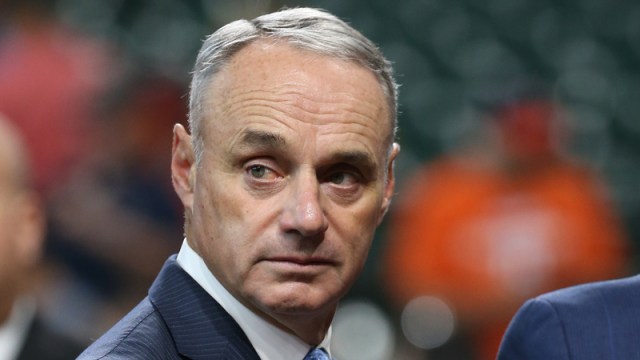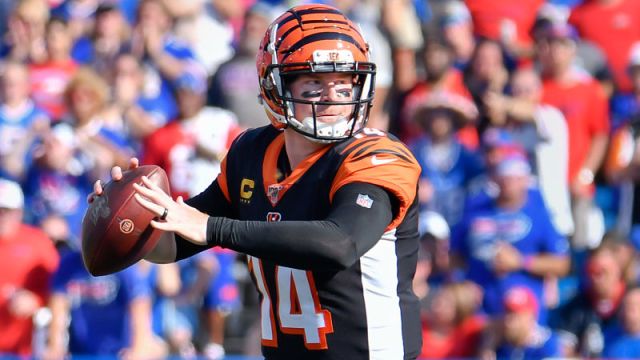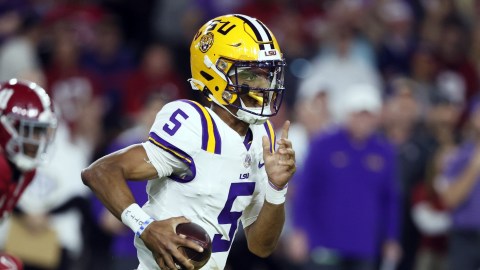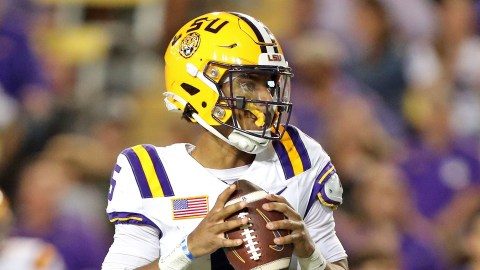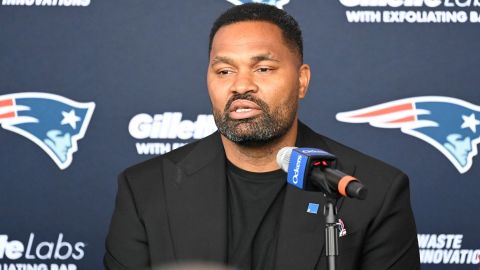It was a hot, steamy South Carolina Saturday in October 2018, and the Lenoir-Rhyne Bears were struggling.
Down to their fourth-string quarterback after losing their starter to mononucleosis, his backup to a broken leg and his backup to a torn hamstring, the Division II squad was trying its best to keep pace with South Atlantic Conference rival Newberry College, which had opened up an early 14-0 lead.
Down seven with time winding down in the first half, David Cole sought out his best player. He had a message for him.
“Listen, man,” said Cole, Lenoir-Rhyne’s secondary/specialist coach. “This is a point where special teams are going to have to do something.”
“I’ve got you, Coach,” Kyle Dugger replied. “I’ve got you.”
On the ensuing drive, Dugger returned a Newberry punt 69 yards for a touchdown. Less than eight minutes later, he struck again, capping the opening drive of the third quarter with a 64-yard punt-return score.
Lenoir-Rhyne closed out the game with 20 unanswered points, won 34-21 and didn’t lose again for two months, building a 12-game win streak before falling in the national quarterfinals.
“He just took over the game as a punt returner,” then-Bears head coach Drew Cronic told NESN.com. “I couldn’t believe they punted it to him. And then they punted it to him again. He just completely took over that game just with punt returns.”
Dugger’s rare athleticism and potential for defensive versatility are what put him on the New England Patriots’ radar and made him the highest Division II draft pick since 1999 (37th overall). But in conversations this week with Cronic and Cole, nearly every one of their responses ultimately pivoted back to the stud safety’s ability to make game-changing plays in the return game.
“He’s the best punt returner I’ve ever had,” said Cronic, who coached Dugger in 2018 and 2019 before taking over as head coach at Mercer University. ” When I first got to L-R … they told me how good of a punt returner he was. I was like, ‘Yeah, OK. Whatever.’ And then I watched the film, and I’m like, ‘Holy crap.’ ”
(You can find Dugger’s two Newberry returns at the 2:56 and 4:20 marks of this highlight reel.)
Most NFL punt returners are slot receiver types — small, shifty athletes who can maneuver their slender frames through oncoming traffic. Gunner Olszewski, who will be Dugger’s primary competition for the job this summer, falls into that category. He’s generously listed at 6 feet, 190 pounds. Same with Julian Edelman (5-10, 198), Danny Amendola (5-11, 185), Wes Welker (5-9, 185) and Troy Brown (5-10, 196).
Dugger is different.
He measured in at a solid 6-foot-1, 217 pounds at this year’s NFL Scouting Combine, boasting the longest arms and biggest hands of any 2020 safety prospect. He’s the heaviest defensive back on New England’s roster but also one of the most athletic, testing in the 97th percentile in the vertical and broad jumps and the 78th percentile in the 40-yard dash (4.49 seconds).
“A man of that stature, to be able to have the body control that he has and the quick feet that he has to get himself going east and west and then put his foot in the ground and go north and south and outrun people and run through tackles and do it multiple times a game, I was like, ’This is a pretty special kid,’ ” said Cole, who followed Cronic to Mercer after coaching Dugger for four seasons.
” … I told him initially, ‘When you catch the punt, all your lanes are going to be vertical, not east and west. So get your big self going north and south like a big, heavy truck, and no one will stop you.’ He listened to the coaching, and the rest is history.”
No kidding.
Special teamers at D-II schools like Newberry, Limestone and UVA-Wise were no match for Dugger’s rare blend of size, speed and explosiveness. He returned six punts for touchdowns in 42 career games at Lenoir-Rhyne — including one two-score performance as a junior and another as a senior — and averaged 16.5 yards per runback over his final two seasons.
“He’s so unique, because he’s not your typical punt-return specialist,” Cronic said. “He’s not built like that. It wouldn’t surprise me to look up and see him being 235, 240 pounds and being one of those overhang linebackers in (the Patriots’) defense — one of those guys getting closer to the ball — because he can probably be that big. So it’s different.
“You hear about a punt returner, and you’re thinking it’s one of these 5-9, 180-pound guys that can really motor. It’s totally different to see him back there doing it. It’s really unique. He’s going to be a great defensive player, but I think something else he’ll bring to the table is his ability to return punts.”
When Lenoir-Rhyne’s opponents would punt, Bears fans wouldn’t head to the restroom or grab a hot dog. They’d sit and watch, hoping the other team would be foolish enough to test their NFL prospect.
“Lenior-Rhyne has a great small-college atmosphere on a Saturday,” Cronic said. “It’s really a good atmosphere. And when the other teams would punt, all the people in the stands — because you can tell when the ball leaves the foot of the punter, ‘OK, he’s going to have a chance to catch this one.’ Whenever you could see ‘Oh, Kyle’s going to get a chance to touch this football,’ it was like the air got sucked out of the stadium for a moment. Everybody stands up, and you can just feel it. Something wild might happen right here.
“I’d have never punted it to him. I’d have punted it in the stands every time. But that was the kind of feeling he gave to the stadium. People came to watch what Kyle was going to do. And when you could see that he was going to be able to field the ball on a punt return, the whole stadium was like, ‘Oh, here we go. What’s going to happen?’ And quite often, something good happened.”
Cole could sense those electric currents of anticipation, too.
“I think people were really looking forward to opposing teams punting to him and seeing if they were going to punt to him, because he has the ability to take a punt back (for a touchdown) every time he touches the ball,” he said. “You’re going to see a big, athletic guy that has a great skill set and will knock you the freak out, too.”
The biggest question mark surrounding Dugger as he begins his Patriots career is the massive jump in competition from Division II to the NFL. His performance against college football’s best at the Senior Bowl and combine sold the Patriots — who’d sent multiple evaluators to Lenoir-Rhyne during Dugger’s injury-shortened senior season — but he’ll still need to prove he replicate his collegiate dominance against bigger, faster professional opponents.
On defense, he’ll have the opportunity to develop behind veterans Devin McCourty and Patrick Chung while he competes for reps with the likes of Adrian Phillips and Terrence Brooks. And history suggests his small-school background shouldn’t prevent him from making an immediate impact in the return game.
Six of last year’s top nine NFL punt returners by return average played their college ball outside of the FBS, including rookies Olszewski (D-II Bemidji State) and first-team All-Pro Deonte Harris (D-II Assumption). Just one of those nine came from a Power Five program (Braxton Berrios, Miami).
During his introductory conference call last Friday, Dugger said he “know(s) for a fact that I’ll have a big role in the special teams department as far as punt returns if the opportunity presents itself.”
“People act like this has never been done before,” Cole said. “There’s a ton of Division II players playing in the NFL. Malcolm Butler was one of them. So what kind of frustrates me is that everyone keeps talking about this ‘Division II, how’s it going to translate?’ Well, (expletive), it’s not like it’s the first time in history that this is being done. He’s just going to be one of those stories that continue to show and allow people to understand that ballplayers are everywhere.”
Cronic isn’t concerned, either.
“Kyle could have been at Alabama or Clemson and been one of their best players,” the head coach said. “He’s physical. He’s explosive. He’s a 4.4 guy. He’s close to 220 pounds. He could literally play, for us, at the D-II level, he could have played everything probably from safety to defensive end. And it was all I could do to not put him on offense. …
“I was a walk-on at Georgia. I played with Champ Bailey and Robert Edwards and some of those guys. Kyle is really, really special.”

